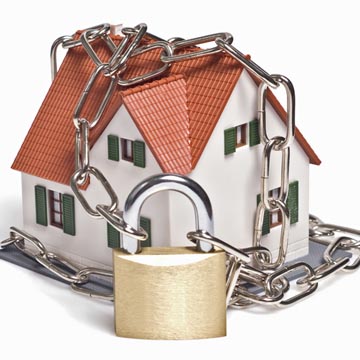Fixed Rate Loans

What is a fixed rate home loan?
A fixed rate home loan will allow you to lock in an interest rate during the entire fixed term period. A locked interest rate is a fixed interest rate that many bank lenders offer to borrowers for a specified amount of time. You can choose from a 3, 5, 7, 10, 15 or 20 year fixed rate period.
This means that you will be able to know exactly how much your mortgage payments will be for the duration of the fixed rate term. For example, a 10 year fixed term loan will remain at the agreed upon interest rate for the entire 10 years, regardless of variable interest rate fluctuations.
What is a “rate lock”?
Fixed interest rates change very frequently and can change between the time you have applied and the time when your loan settles. A rate lock is the term used to describe when a lender holds a borrower’s current fixed rate quote for a short period of time. Borrowers may request a rate lock for up to 90 days.
If you apply for a fixed rate loan without getting a “rate lock”, there is a chance that you may end up with a rate higher interest than the fixed rate you initially applied to receive. Borrowers usually are required to pay a “rate lock” fee to insure that the interest rate which they applied for has been locked for them. Lenders typically charge a percentage of the loan amount that is borrowed which is usually around 0.15%. Check with your lender because every lender has different policies and rules.
What are the differences between the 3, 5, 7, 10, 15 and 20 year fixed rate loans?
3 Year Fixed Rate Loan
The most popular fixed rate loan is for 3 years. The interest rates are much lower than any other multiple year fixed rate loans, besides the 1 or 2 year loans which have even lower interest rates.
5 Year Fixed Rate Loans
Lenders offer 5 year fixed rate loans at higher interest rates than the 3 year fixed interest rates. The 5 year fixed rate loan is great for borrowers who cannot afford to pay the loan off in 3 years.
7, 10 and 15 Year Fixed Rate Loans
Some lenders may offer fixed rate loans for 7, 10 or 15 years. However, there will be a large break cost to pay off the loans early and break the contract. If you are thinking of getting this kind of loan, you need to be sure that you will be able to keep the property for the length of the fixed rate loan duration.
20 Year Fixed Rate Loans and 30 Year Fixed Rate Loans
The 20 year fixed rate loans and 30 year fixed rate loans are only available to Americans. They are not available in Australia or the UK. These lengthy fixed rate loans do not have any break fees because American borrowers usually have a higher profit margin on their loans.
What are the advantages of a fixed rate loan?
One of the main advantages of having a fixed rate loan is the security of knowing that your interest rate will be locked for the duration of your fixed rate term even if interest rates have increased during that time. This can save you a lot of money in the future.
Some bank lenders that offer fixed rate loans may allow you to make an unlimited number of extra repayments and redraw those extra repayments without incurring any penalties.
What are the disadvantages of a fixed rate loan?
Many lenders who offer a fixed rate mortgages have a limit on the number of extra payments that borrowers can make without the lender charging a penalty fee for the overpayment. Usually these types of loans have a higher upfront cost. They might also restrict the borrower from redrawing extra payments during the fixed loan term. Some lenders may also charge a “break fee” if the borrower terminates the fixed loan term earlier than planned. Break fees can end up costing thousands of dollars. Another disadvantage of a fixed rate loan is that you will not benefit from a lower repayment if interest rates decrease and they do not allow an offset.
What exactly is a break fee?
Lenders who offer fixed rate loans will usually borrow the funds from the money market themselves for around the same amount of time that they give the customer for the fixed rate loan. These lenders “buy” the loan money at wholesale rates and “sell” it to the borrowers at retail rates. The difference between the two loans is the margin of profit gained from the loan.
If a borrower pays off their loan contract early by making extra payments or by paying in full, then the lender will have to lend that money to another borrower or sell it back into the money market. The point of a fixed rate loan is so that the lender can control the repayment amount and number of payments that you have to repay. If you decide to pay off the fixed rate home loan early and the money market’s interest rates have decreased, the lender might lose money. To offset the estimated margin loss, the lender charges their customers break fees for paying off the loan early. However, if there is an increase on the interest rates then the lender may offer the borrower a deal to pay off the loan early. The lender will be able to use the money to lend to another borrower at a higher interest rate, resulting in a higher profit margin for the lender.
Break fees can end up being extremely high. It is highly recommended that you apply for a fixed rate loan for 5 years or less. For example, a $400,000 fixed rate loan for 5 years has a wholesale interest rate of 4.5%. If the borrower pays off the loan in 2 years when the money market’s interest rate is 3%, then the break cost can end up costing $18,000! To calculate this, you take the current loan amount, multiply it by the wholesale rate change, and multiply that by the term remaining on the loan. $400,000 x 1.5% x 3% = $18,000.

 “Capped”, it usually means that there is a limit or there is a certain boundary that cannot be crossed. A capped loan similarly would mean that the interest rates have a limit set to them, and cannot go above a certain point. This is of course limited to a certain period, which may be a number of years.
“Capped”, it usually means that there is a limit or there is a certain boundary that cannot be crossed. A capped loan similarly would mean that the interest rates have a limit set to them, and cannot go above a certain point. This is of course limited to a certain period, which may be a number of years. To fix or not to fix your loan is a common question. Another common question is for how long you should fix your loan rate. This can last from a few years to several years. Deciding on whether or not to fix is also essential as this can have great impact on the interest rate you will be paying and your total expenses.
To fix or not to fix your loan is a common question. Another common question is for how long you should fix your loan rate. This can last from a few years to several years. Deciding on whether or not to fix is also essential as this can have great impact on the interest rate you will be paying and your total expenses.